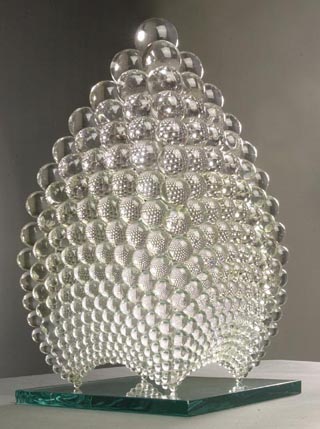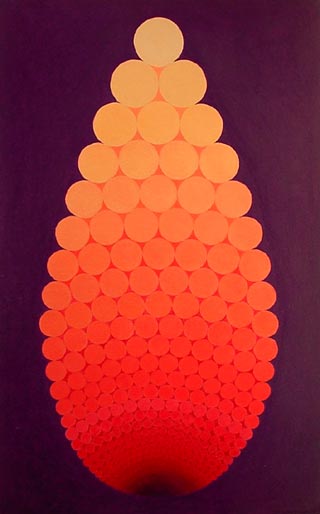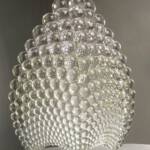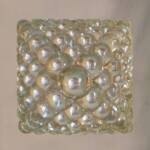This design which is unique, and unprecedented in the history of sculpture and architecture, bears the name NOOSPHÈRE or the uprising of consciousness.
The original drawing (1967) is from the work of Zanis Waldheims (Riga 1909- Montreal 1993), and the resulting sculpture, joins an intellectual approach, issued from the great current of geometrical abstraction introduced by Kandinsky, Mondrian and Malevitch at the beginning of XX th century. Although, contrary to the original orientation of these pioneers which wanted to be pure; geometrical abstraction got lost in the 1950s in a certain type of abstract where "anything goes" such as Jackson Pollock's work.
This "thoughtful" design is rather the opposite. It is a return to the premises (or ideals) of pure geometrical abstractionism. For Waldheims, geometrical abstraction consists in imagining a set of rules, associated to a set of primary geometrical forms, to illustrate and/or give an visual idea of the complexity of the human thought, in a language which seeks at the same time sensibility and reason.The design form, seen here in an elevation view, illustrates the subordination of energy levels, from the illustration of the Noos or supra consciousness at the top of the glass design, to the most complex fog of ignorance in the bottom. The sculpture rests on four small pheres, which dive towards the infinity and complexity. The current sculpture, which is 600 mm in height or 24 inches, and 275 mm in its widest part or 10 inches, is formed on its four faces, of 685 hand made transparent glass spheres. It consists of 19 different sizes of spheres, ranging form 60 mm in diameter or 2 1/2 inches for the biggest at the top; to 6 mm in diameter of 1/4 inch for the smallest at the base.
All the forms of general geometry are present, as well as for those who like figures and numbers, numerous mathematical formulae, with the number Pi as a prime base. Are present: the egg shape with its complex curves; the square shape when the sculpture is seen from the top or from under; the unprecedented organic pyramidal construction which differs completely from the Egyptian pyramid; the sphere; the triangle; the progressive arch, the hexagon pattern et cetera. All the spheres are held together with glue, and the glue illustrates the molecular cohesion that must exist between elements, also in human rapport to chalenge life.
There is enough data to satisfy our left brain, but for the eye and sensibility, the show begins when the sculpture is directly put outside on a bright sunny day. There, all the spheres forming the sculpture, interact on one another by the play of the light rays penetrating in each sphere acting like a magnifying glass, resulting that one can see, instantaneously, all the colors of the rainbow criss-crossing on one another: the greens, yellows, reds or blues mix in a beautiful spectrum. The sculpture then shines with one million bright lights.
By Yves Jeanson, July 2009.
 | ||||||
 | ||||||
The Noosphère Sculpture
By Yves Jeanson, glass sculptor




